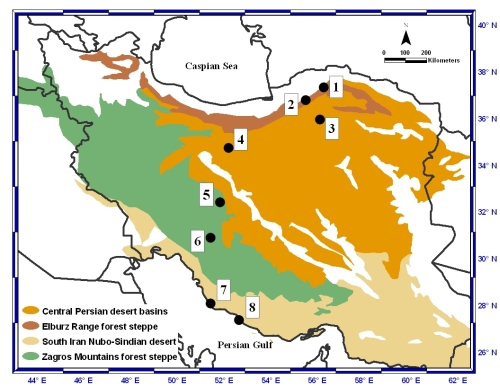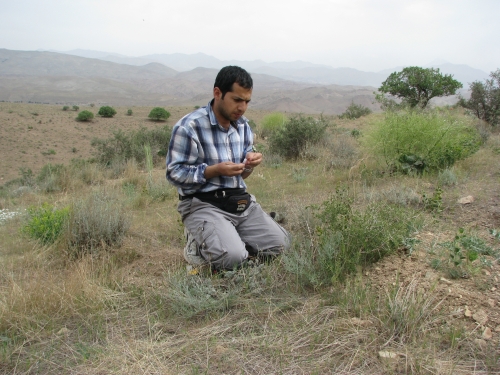
Home | Systematics | Resources | Attic | Data Privacy Statement | Impressum | AntCat | AntMaps | Asian Myrmecology | ANeT
|
Dear Reader,
Iran is a vast country with a total area of 1.6 million square kilometers, which is located in the mid-latitude band of arid and semi-arid regions of the Old World, in Southwest Asia. Biogeographically southwest Asia represents a transition zone between three regions: Palaearctic, Afrotropical and Oriental. Iran′s borders from the south and east are near to Afrotropical and Oriental regions, respectively. Although arid and semi-arid areas cover more than half of the country, Iran also includes high mountains with alpine areas, broadleaf forest in the southern coastal plains of the Caspian forests, and steppe forests in the north and west. The Iranian ant fauna has been poorly investigated. So far 142 species belonging to 32 genera have been recorded from Iran (Paknia et al. 2008, Paknia et al. 2010), which is still far from the real number.www.antbase.net will continuously add new species from Omid Paknia’s collection to build the most comprehensive online resource for Iranian ants. All pictures were taken by the very talented Elham Kashani!
Research projects of Dr. Omid Paknia
Community structure and species richness of ants (Hymenoptera: Formicidae) along a latitudinal gradient in Iran
Ants play important roles in terrestrial ecosystems. They act as predators, scavengers, herbivores, detritivores, and granivores and interact in various ways with plants and other insects. In our research project, we want to obtain a detailed perspective of the ants from Iran. The identification of the ant fauna of Iran and the determination of species richness and composition of ants in three main biomes of Iran, Hyrcanian forests, Irano-Touranian semi deserts and deserts, and Khalijo-Ommanian, are the most important aims of this project that has been conducted along an ecological gradient, over a transect of about 1200 km from north to south of Iran in forest, steppe and desert regions. Eight sites in four different ecoregions will have been studied (Fig.1). Ants have been collected with pitfall traps and at baits (Fig.2). The analysis of the field work and taxonomical studies is conducted in the Department of Experimental Ecology, University of Ulm, Germany. Results will help to future plans of conservation biology and wildlife management and the collected specimens will entail in a comprehensive collection of the Iranian ant fauna, with voucher specimens that will be deposited at the Zoological Museum of Gorgan University in Gorgan and in the AntbaseNet Collection (ABNC).
 |
Fig. 1 Ecoregional map of Iran; black points represent the eight study sites within four ecoregions that are indicated by different colors. |
| Fig 2. Collecting ants in an Elburz steppe site, Iran. |  |
References:
Paknia O, Radchenko A, Alipanah H and Pfeiffer M, 2008. A preliminary checklist of the ants (Hymenoptera: Formicidae) of Iran. Myrmecological News 11: 151-159.
Paknia O, Radchenko A, Pfeiffer M, 2010. New records of ants (Hymenoptera: Formicidae) from Iran. Asian Myrmecology 3: 29-38.




